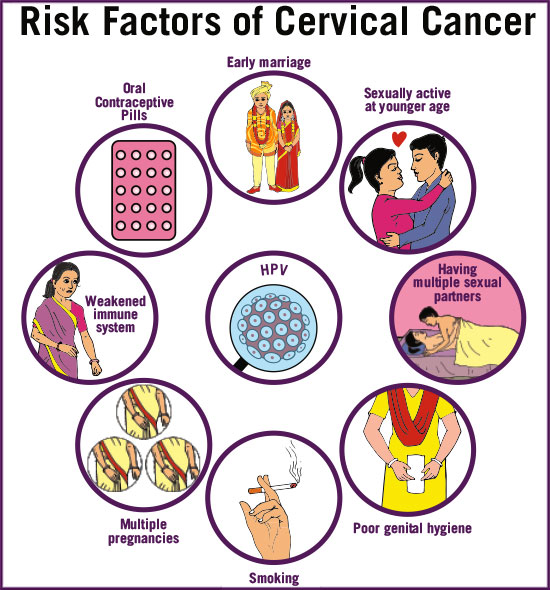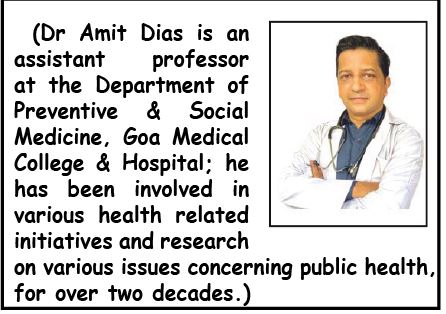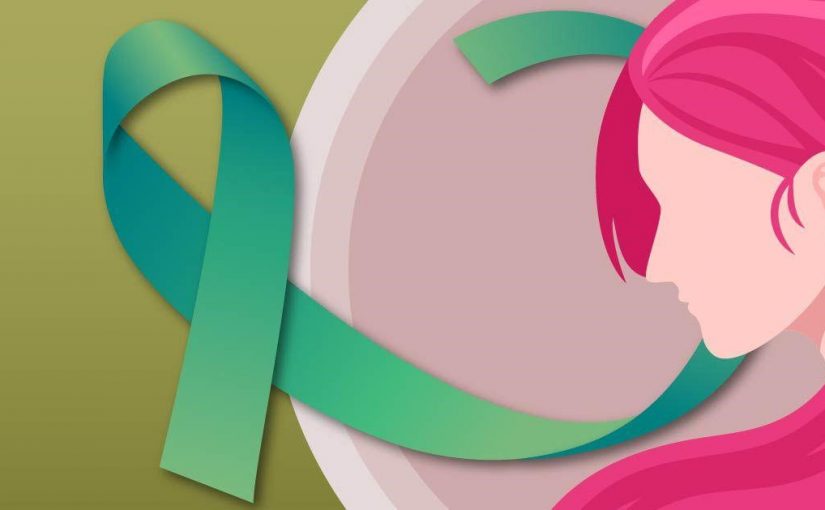As part of the Cervical Cancer Awareness Month observed in January, we spoke to Dr Amit Dias, MD, to get to know more on the subject. “This is one of the few cancers that can be prevented by taking a vaccine,” he explains, “yet several people in our country get cervical cancer and die from it.” He urges women to be informed, get screened and vaccinated. Here is an enlightening interview to spread spread awareness and the message of hope to everyone….
Goan Observer: January is recognized as the Cervical Cancer Awareness Month. Could you throw light on the need for this?
Dr Amit Dias: There is a lot known about cervical cancer. It is one of the most preventable and treatable types of cancer. Prevention plays a critical role in reducing the incidence through awareness, vaccination, and regular screenings. However, in our country, it still contributes to a large number of deaths and people report late. Awareness Month is observed to raise awareness and motivate women to change their behavior to prevent cancer, screen, and get treated. Countries around the world are working to accelerate the elimination of cervical cancer in the next few decades.
Q: Can you elaborate further on what is the global burden of burden of this disease?
A: Here are some startling statistics from the WHO.
Cervical cancer is the fourth most common cancer in women globally with an estimated 604 000 new cases and 342 000 deaths in 2020.
The highest rates of cervical cancer incidence and mortality are in low- and middle-income countries such as India. This reflects major inequities driven by a lack of access to national HPV vaccination, cervical screening and treatment services, and social and economic determinants.
Many people are not aware of the fact that cervical cancer is caused by persistent infection with the human papillomavirus (HPV).
Women living with HIV are 6 times more likely to develop cervical cancer compared to women without HIV.
Prophylactic vaccination against HPV and screening and treatment of pre-cancer lesions are effective ways to prevent cervical cancer.
Cure is available for cervical cancer provided its diagnosed early and treated promptly.
Unfortunately, it remains a leading cause of cancer-related deaths in many low- and middle-income countries, including India. In India, it is a major public health concern, with a high incidence and mortality rate. Lack of awareness, limited access to screening, and socio-economic factors contribute to the burden.

Q: Who is at risk of developing cervical cancer?
A: Cervical cancer is primarily caused by persistent infection with high-risk types of human papillomavirus (HPV). While HPV is common, not everyone who contracts the virus will develop cervical cancer. Certain factors can increase the risk of developing cervical cancer. These include:
HPV Infection: Persistent infection with high-risk strains of HPV, particularly HPV types 16 and 18, is the most significant risk factor for cervical cancer.
Sexual Activity: Early initiation of sexual activity and having multiple sexual partners can increase the risk of HPV infection.
Smoking: Women who smoke have a higher risk of developing cervical cancer compared to non-smokers. Smoking may weaken the immune system’s ability to clear HPV infections.
Weakened Immune System: Individuals with a weakened immune system, such as those with HIV/AIDS or those undergoing immunosuppressive therapy, are at an increased risk.
Oral Contraceptive Use: Long-term use of oral contraceptives (birth control pills) has been associated with a slightly increased risk of cervical cancer.
Having Many Children: Women who have had multiple full-term pregnancies may have a higher risk of developing cervical cancer.
Family History: Having a first-degree relative (mother or sister) with a history of cervical cancer may slightly increase the risk.
Lack of Regular Pap Smears: Not having regular Pap smears or not following recommended screening guidelines increases the risk of not detecting precancerous changes or early-stage cervical cancer.
Q: What are the danger signs that might indicate the presence of cervical cancer?
A: People need to be aware of the following signs of cervical cancer:
• increased or foul-smelling vaginal discharge
• unusual bleeding between periods, after menopause, or after sexual intercourse
• Symptoms like persistent pain in the back, legs, or pelvis
• weight loss, fatigue, and loss of appetite
• vaginal discomfort
• swelling in the legs.
However, it’s important to note that cervical cancer may not always present with noticeable symptoms in the early stages, which further emphasizes the need for regular screenings.
Q: Speaking of screenings, how can one be screened for cervical cancer, and when should these screenings start?
A: The primary screening method for cervical cancer is the pap smear or pap test, which detects abnormal cells in the cervix. It is recommended to start screening at the age of 21 and then continue regularly based on healthcare provider recommendations. Another option is the HPV test, which can be done alone or in combination with the Pap smear. The frequency of screenings may vary based on individual risk factors.
Q: What are the recommendations of the American Cancer Society regarding cervical cancer?
A: The American Cancer Society recommends starting cervical cancer screening at age 25 with primary HPV testing every five years. Alternatively, women aged 25 to 65 can choose a co-test every five years, which includes an HPV test and a Pap smear every three years. It’s crucial to discuss the best screening approach with healthcare providers based on individual health history and preferences.
Q: You mentioned that cervical cancer can be prevented. Can you elaborate on this for our readers?
A: Prevention involves a multi-faceted approach. First and foremost, vaccination against human papillomavirus (HPV), the primary cause of cervical cancer, is key. The HPV vaccine is highly effective and recommended for both boys and girls. Additionally, practicing safe sex, avoiding smoking, and maintaining a healthy lifestyle contribute to reducing the risk of cervical cancer.
Thank you for sharing your expertise on cervical cancer and the importance of awareness, screening, and prevention. Your insights as usual are invaluable, especially during Cervical Cancer Awareness Month.

